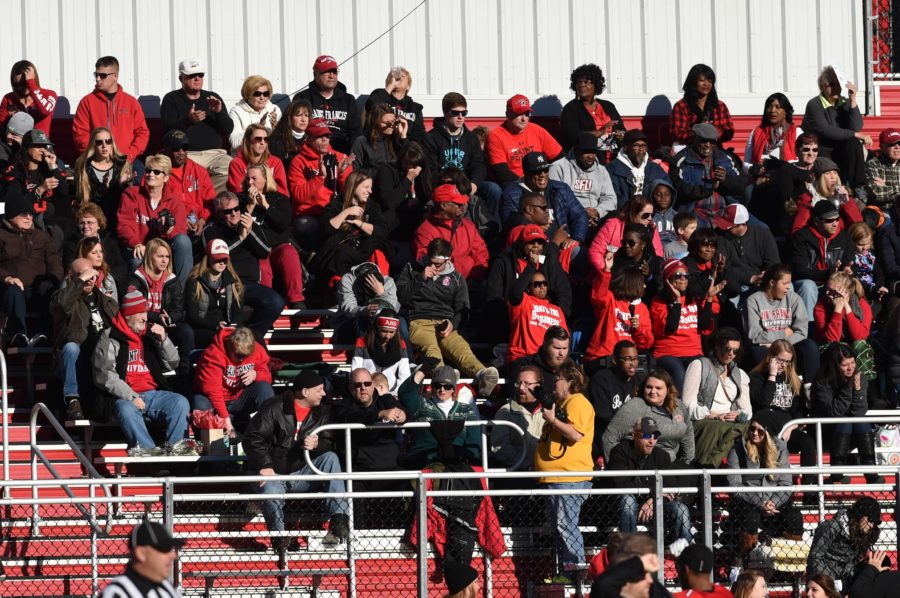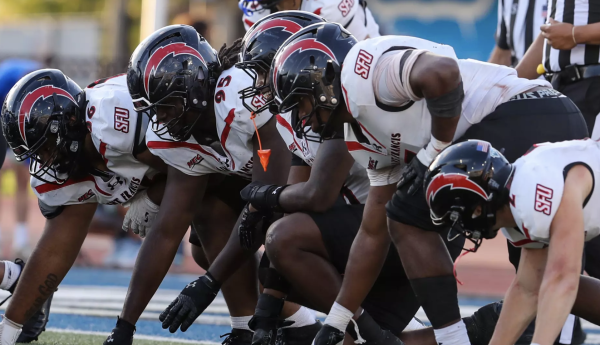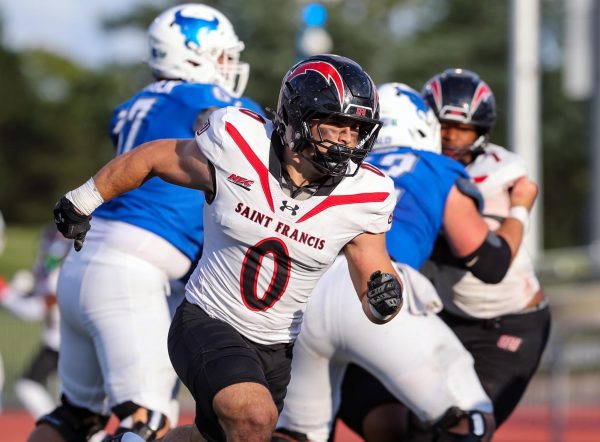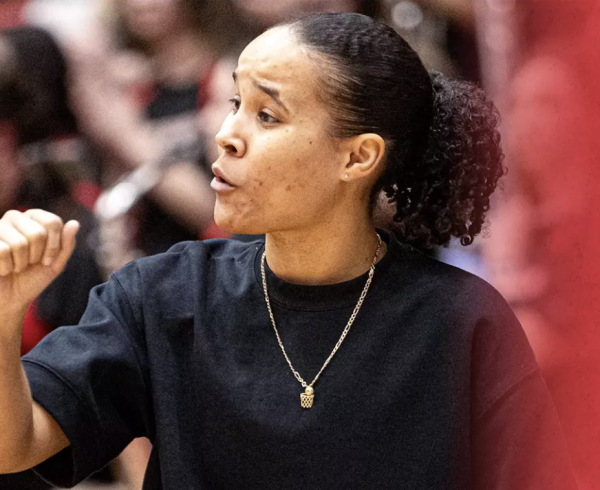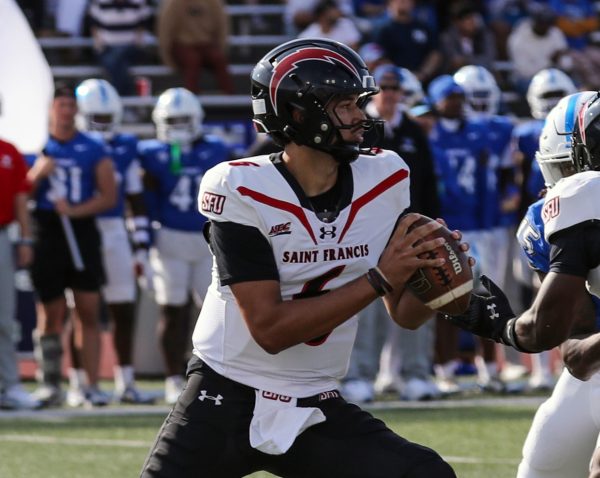Football outdraws basketball in fan support
For many years, the most recognized sport at Saint Francis has been the men’s basketball program. It has historically drawn the most fans and generated the most media attention.
This might be changing.
Attendance at Red Flash football games continue to increase, while the number of fans attending SFU basketball games is decreasing.
The Red Flash men’s basketball team recorded its lowest home attendance average in the last six years despite posting a 17-17 record and advancing to the CollegeInsiders.com Tournament. An average of 820 fans turned out for 14 home games during the 2016-2017 men’s basketball season.
Saint Francis men’s basketball coach Rob Krimmel attributes the low attendance average to poor weather on many game days. Krimmel also pointed out that he coaches one of the youngest teams in Division I basketball.
“There’s a lot of guys on our roster that the community doesn’t know as well” said Krimmel.
The young basketball team does not have many connections with the community because they have not been in Loretto for very long. The team included only two seniors and only one of those seniors, Georgios Angelou, started multiple games this past season.
“In the past, we’ve had seniors that have been key components in the line-up,” said Krimmel.
Krimmel said it takes time to make connections with students and people in the community.
Last fall, the Red Flash football team enjoyed its most successful season since joining the Northeast Conference in 1996. The team posted a 7-5 record and captured its first NEC title, going 5-1 in conference games.
With the success came support. Last fall, Red Flash football attendance was the highest it has been in the past six years, with SFU averaging 1,592 fans in four home games during the 2016 season.
Fans who wanted to see the team’s senior stars, including Lorenzo Jerome, Solomon Leaeno and Zack Drayer, contributed to the spike in ticket sales.
The players’ connections with the community and students could also have played a significant role in the attendance boost.
Sophomore occupational therapy major Alyssa Burdett did not attend a single football game as a freshman in 2015.
“I didn’t really know anyone on the team when I first got here,” said Burdett, “so I just went home most of the weekends.”
It took a semester for Burdett to make connections, including many with the members of the football team. In 2016, she attended every home football game.
“I started to become friends with some of the football players as time went by,” said Burdett, “and they were winning so it made the games exciting.”
Krimmel said it is part of the players’ responsibility to build these types of relationships.
“I put a lot of responsibility on the guys in that locker room,” said Krimmel, “and then the coaches, to build those relationships.”
